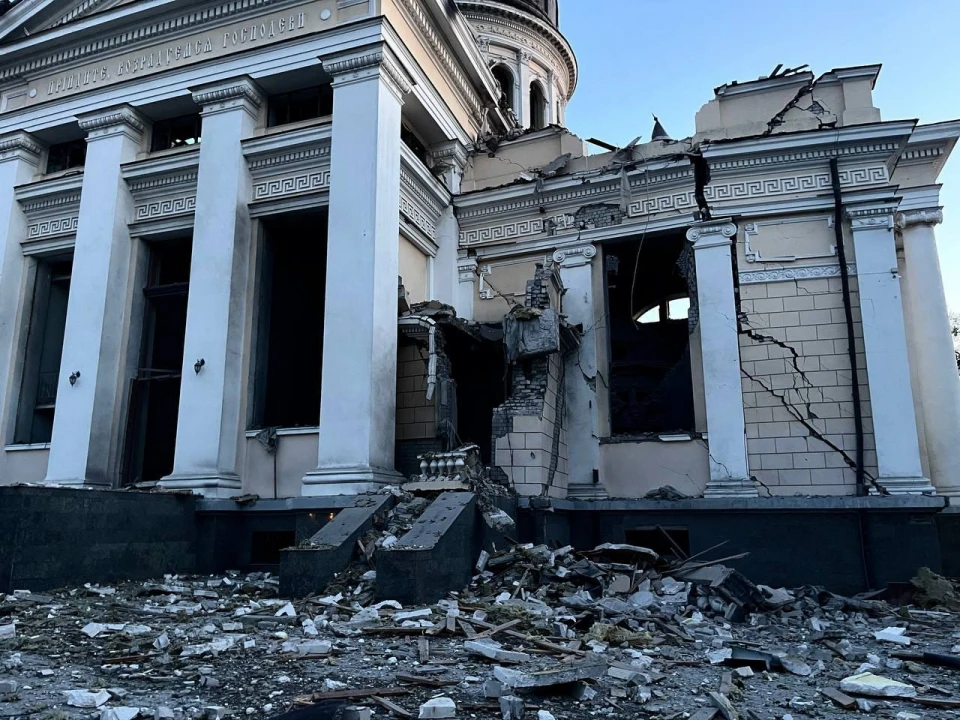
New night attack on Odesa: Russians destroy Cathedral and House of Scientists
On the night of July 23, as a result of another Russian missile attack in Odesa, the Transfiguration Cathedral and the House of Scientists were destroyed
This was reported by the Odesa City Council
The Transfiguration Cathedral in Odesa, which is the biggest Orthodox church in the city, suffered significant damage during a night attack by the Russians. The attack also caused damage to nearby buildings, including the House of Scientists.
The Kasperov icon of the Mother of God, the patroness of Odesa, was found among the debris of the cathedral. Rescuers and city utility services are currently working at the site to deal with the aftermath.
During the air alert on the night of July 23, the Russian army attacked Odesa using at least five types of missiles, resulting in one person killed and 19 injured.
- Russia's missile attack on July 21: important infrastructure in Odesa region damaged

For reference
The Cathedral was founded in 1794 and consecrated in 1808. After restoration, it was re-consecrated in 2001. Over time, the cathedral's architectural development reflected the progress of Odesa and the whole region. It started as a small religious building but grew to become one of the largest cathedrals in the Russian Empire, capable of accommodating up to 12,000 people in the early 20th century.
The House of Scientists in Odesa, established in 1923, was one of the first such institutions in the USSR and the first in Ukraine. It has been housed in the palace of Count Tolstoy since 1934. Despite the occupation of Odesa by Romanian troops from 1941 to 1944, the House of Scientists continued its work and even served for propaganda purposes by the new government. In 2000, the museum of the House of Scientists opened, displaying exhibits and documents collected by the house's director, Tereshchenko. In 2002, the House of Scientists received the status of an enterprise with the right to conduct commercial activities.
- News














































